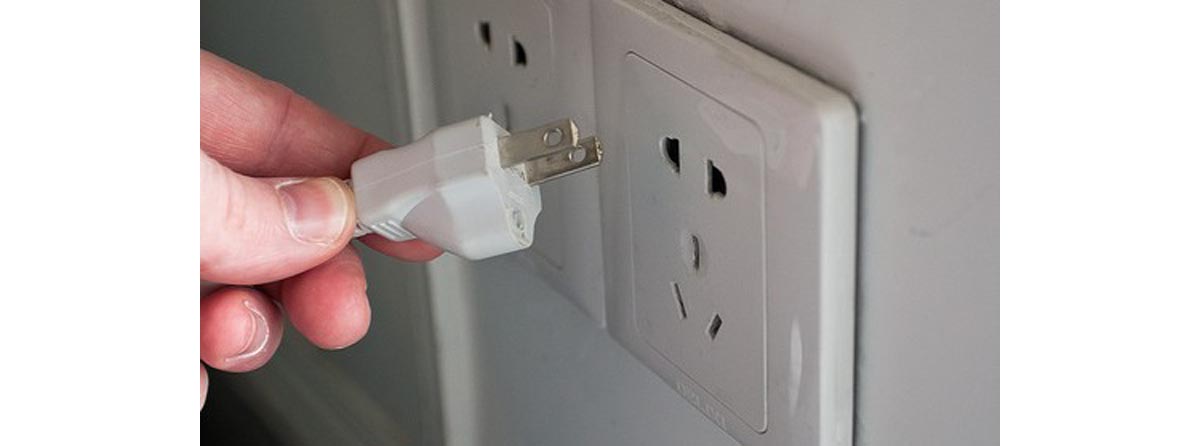Injuries that occur as a result of an electric shock can range from mild to severe, and can even be life threatening in some cases. An electrical shock injury can occur as a result of an individual coming into contact with any type of electric energy source. When exposure to an electrical energy source occurs, the individual experiences a surge of energy that pulses throughout a part of the body, resulting in a shock.

In mild cases, there may be no actual injury that occurs, but during a severe electric shock injury, devastating damage to the body can occur. Severe electrical shock injuries can be fatal.
There are several factors that determine the type and extent of the injuries that occur from an electric shock.
The severity of electric shock injuries depend on a variety of factors, such as:
- the type of current that the individual came into contact with,
- the voltage involved and the amount of current it puts off,
- the resistance of the body’s tissue and the tissue’s ability to withstand the current,
- the route in the body that the electricity uses as its pathway to surge through the body.
During low voltage electric shock, significant damage or bodily injury does not usually occur. In the majority of these low voltage injuries, if they do occur, the damage is usually minimal.
Injuries that occur as a result of a high voltage electric shock are serious and generally result in significant damage. Any voltage greater than 500 is considered a high voltage.
Children and adults are prone to being struck by different types of electric shock. Generally, children do not usually experience a serious electric shock injury. In most cases involving children, the injuries are mild and occur as a result of coming into contact with low voltage electricity that is under 220 volts. Common low voltage sources that injure children are household appliance electrical cords, wall outlets and extension cords, either resulting from accidents or curiosity.
Adults are more likely to be exposed to and suffer injuries from a high voltage electrical shock. These high voltage injuries can occur in the home, although they are much more common in the workplace. Adults are susceptible to serious bodily harm as a result of these injuries.
Dealing With Electrical Shock Injuries
Helping the Injured
It is extremely important to exercise caution when attempting to help an individual who has experienced an electrical shock injury that occurred as a result of coming into contact with a high voltage electrical source. Individuals who come into contact with victims of these types of electrical injuries need to take precautions to prevent themselves from becoming second victims.
This is because coming into contact with the individual can lead to a similar type of electrical shock. This can also occur without actually touching the victim, but as a result of being in close proximity of where the injury occurred. For example, if a high voltage wire has fallen and is lying on the ground, it is possible that a circle of current has spread out from the tip of the electrical line.
In cases like this, the best course of action to take is to call 911 and wait for emergency assistance or to ask the 911 dispatcher for instructions on how to proceed while you are waiting for the paramedics to arrive on scene. The emergency personnel will notify the electric company of the situation and the power to the downed line will be disconnected so that the victim can be safely treated without incurring additional harm.

Common Causes of Electric Shock Injuries
Those people who work with high power lines such as cable or phone lines are at increased risk of sustaining a high voltage injury that causes them to fall from elevated heights.
For this reason, it is important to never move them without the assistance of medical personnel.
Electric shock injuries can also occur as a result of being struck by lightning. Although it is an unusual form of electric shock, being struck by lightning can cause a variety of injuries, including external burns on the skin, cardiac arrest, respiratory failure, and neurological damage. Contrary to what you might think, many people do survive being struck by lightning. Other injuries can occur as a result of trauma from existing structures that were affected by the lightning strike, such as downed trees and falling tree limbs.
Electric Shock Symptoms
Depending on the severity of the electric shock, external damage, meaning injuries visible on the outside, may or may not occur.
External damage can range from mild skin irritation to severe skin burns. Burns that develop on the skin are generally the most severe at the point of contact. The most common points of contact for electric shock are the hands, feet (especially the heels) and head. Even in the absence of visible external damage, internal damage may be present, and it is possible that cardiac arrest will occur. Other injuries can occur in addition to or instead of burns to the skin. If the individual has experienced strong muscular contractions that results in forceful ejection away from the electrical source, injuries to the body’s structure may occur. These include broken bones, injuries to the neck or spine and damage to internal organs. Symptoms to watch for that may indicate broken bones or other internal damage include pain in the hands or feet, shortness of breath, pain in the abdomen, or chest pain.
When to Seek Medical Care
Any individual who experiences a high voltage electrical shock should seek immediate medical attention at the Emergency Room. Individuals who experience a low voltage injury should seek medical attention if they experience burns that do not heal, burns that are red and inflamed, or burns that ooze or have any type of drainage. Pregnant women, the elderly and children should seek immediate medical attention for both high and low voltage electrical shock injuries.
Those who are not sure whether their experience warrants medical attention should contact their doctor immediately, to seek advice on how to proceed. Not all electrical shock injuries require medical attention, but it is safer to get checked out if you have any preexisting medical conditions.
- Photo courtesy of Robert S. Donovan by Flickr : www.flickr.com/photos/booleansplit/5527628335/
- Photo courtesy of Matti Mattila by Flickr : www.flickr.com/photos/mattimattila/2711724717/

